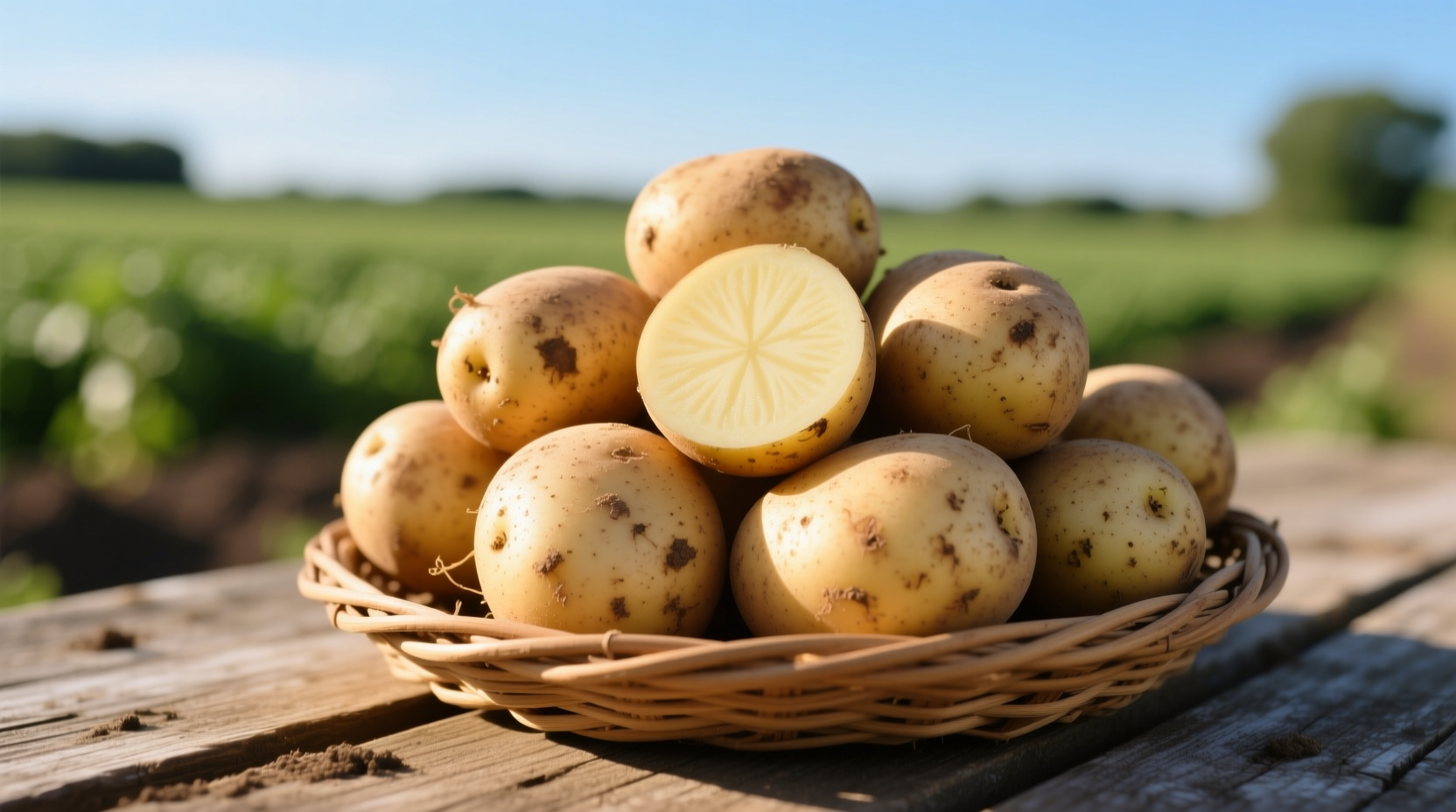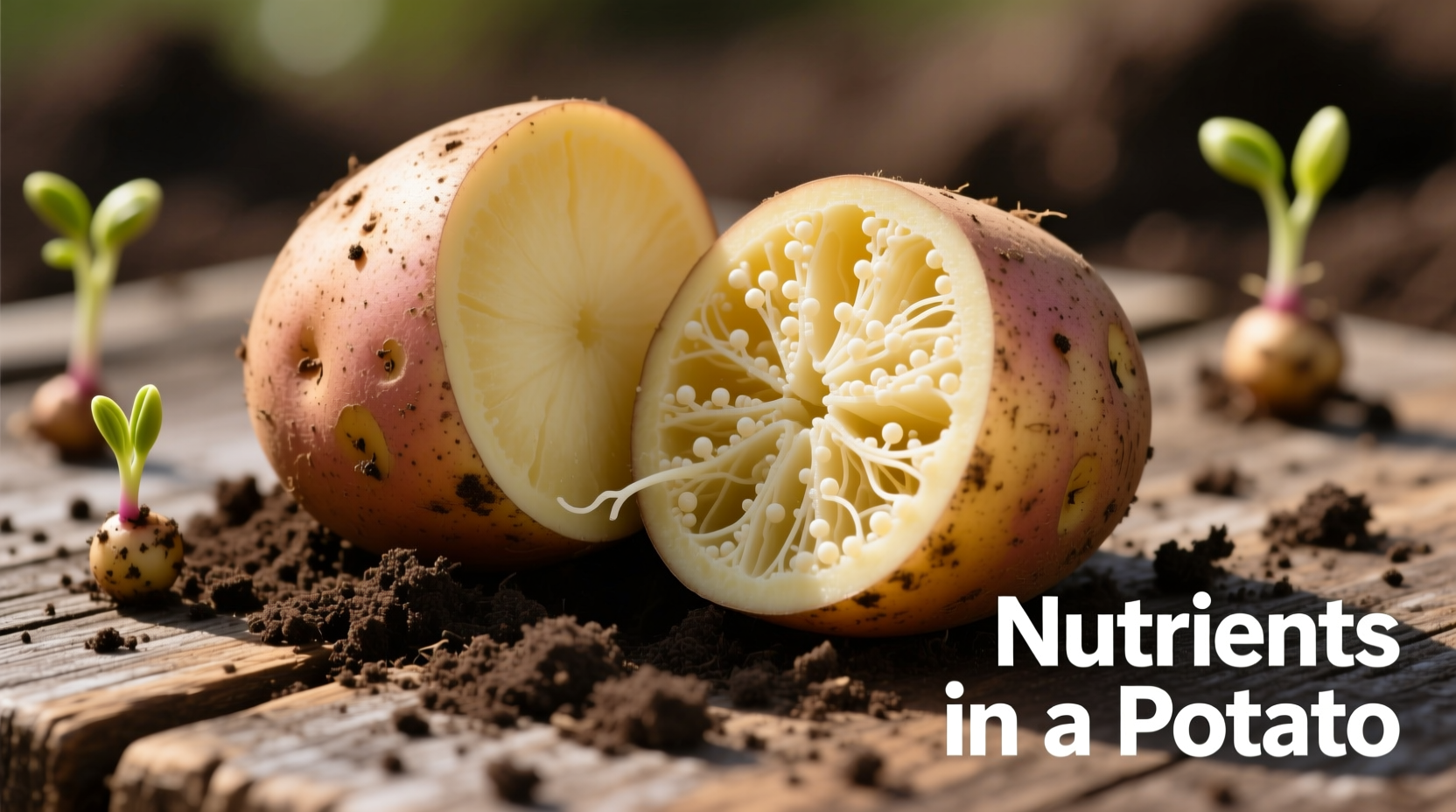One medium potato (150g) delivers 26% of your daily vitamin C, 27% of vitamin B6, 26% of potassium, and 12% of dietary fiber with just 110 calories. The skin contains half the fiber and significant nutrients, making whole potatoes a nutrient-dense food choice that supports heart health, digestion, and blood sugar management when prepared properly.
When you're considering adding potatoes to your diet, understanding their complete nutritional profile helps you make informed choices. Despite common misconceptions, potatoes aren't just empty carbohydrates—they're packed with essential vitamins, minerals, and fiber that contribute significantly to a balanced diet. This comprehensive guide breaks down exactly what nutrients you get from potatoes, how preparation methods affect their nutritional value, and how to maximize their health benefits in your daily meals.
What Makes Potatoes a Nutritional Powerhouse
Potatoes often get unfairly labeled as "just starch," but they're actually one of the most nutritionally complete vegetables you can eat. The humble potato has sustained populations for centuries not just because it's filling, but because it provides a remarkable balance of essential nutrients. Unlike many processed foods that offer calories without nutrition, potatoes deliver substantial vitamins and minerals alongside their carbohydrates.
| Nutrient | Amount per Medium Potato (150g) | % Daily Value | Key Health Benefits |
|---|---|---|---|
| Calories | 110 | 5% | Energy source without excess calories |
| Carbohydrates | 26g | 9% | Sustained energy release |
| Dietary Fiber | 2.6g | 12% | Improved digestion, heart health |
| Vitamin C | 17mg | 26% | Immune function, skin health, antioxidant |
| Vitamin B6 | 0.4mg | 27% | Brain health, metabolism, red blood cell production |
| Potassium | 620mg | 26% | Blood pressure regulation, muscle function |
| Magnesium | 24mg | 7% | Bone health, energy production |
This nutritional breakdown comes directly from the USDA FoodData Central database, the official U.S. government source for food composition information. What makes potatoes particularly valuable is their potassium content—more than a banana—which many Americans don't get enough of in their diets. The vitamin C content might surprise you too, as potatoes maintain much of this nutrient even after cooking, unlike many vegetables where heat destroys vitamin C.
How Potato Preparation Affects Nutritional Value
The way you prepare potatoes dramatically impacts their nutritional profile. Many people unknowingly discard valuable nutrients through improper preparation techniques. Understanding these differences helps you make choices that maximize health benefits while still enjoying delicious potato dishes.
The skin matters more than you think: Approximately half of a potato's fiber content resides in the skin, along with significant amounts of vitamins and minerals. Peeling removes up to 20% of the potato's nutrients, including valuable antioxidants concentrated near the skin. When possible, leave the skin on for maximum nutritional benefit.
Cooking method comparison: Boiling causes the most nutrient loss, particularly water-soluble vitamins like vitamin C and B vitamins that leach into the cooking water. Baking or microwaving preserves more nutrients, while steaming offers a middle ground. Interestingly, cooling cooked potatoes increases their resistant starch content, which functions like fiber and has positive effects on gut health and blood sugar regulation.
According to research published in the Journal of Agricultural and Food Chemistry, boiling potatoes with the skin on retains up to 83% of vitamin C compared to 72% when peeled before boiling. This demonstrates how small preparation changes significantly impact nutritional outcomes.

Special Nutrients That Make Potatoes Unique
Beyond the standard vitamins and minerals, potatoes contain several specialized compounds that contribute to their health benefits:
- Resistant starch: Acts like fiber in your digestive system, feeding beneficial gut bacteria and improving insulin sensitivity. Cooling cooked potatoes increases resistant starch content by up to 50%.
- Antioxidants: Particularly in colored varieties like purple potatoes, which contain anthocyanins that combat oxidative stress. A study from the USDA Agricultural Research Service found purple potatoes contain up to three times more antioxidants than white varieties.
- Kukoamines: Unique compounds found in potatoes that may help lower blood pressure by inhibiting angiotensin-converting enzyme (ACE).
These specialized nutrients explain why potatoes have maintained their place in traditional diets worldwide despite the availability of other carbohydrate sources. Different potato varieties offer distinct nutritional advantages—purple potatoes provide more antioxidants, while yellow-fleshed varieties contain carotenoids beneficial for eye health.
Practical Tips for Maximizing Potato Nutrition
Knowing the nutritional facts is only valuable if you can apply them to your daily eating habits. Here are evidence-based strategies to get the most nutritional benefit from potatoes:
- Cook smart: Bake or microwave potatoes with skin on instead of boiling to preserve nutrients. If boiling, keep the skin on and use minimal water.
- Cool before eating: Let cooked potatoes cool to room temperature before consuming to increase resistant starch content by 1.5-2 times.
- Pair strategically: Combine potatoes with healthy fats like olive oil to enhance absorption of fat-soluble nutrients, and pair with vitamin C-rich foods to boost iron absorption.
- Choose colored varieties: Purple and red potatoes contain additional antioxidants not found in white varieties.
- Store properly: Keep potatoes in a cool, dark place but never in the refrigerator, which converts starch to sugar and creates potentially harmful compounds when cooked at high temperatures.
These practical strategies transform potatoes from a simple side dish into a nutritional powerhouse. The Academy of Nutrition and Dietetics recommends including potatoes as part of a balanced diet for most people, noting their versatility and nutrient density when prepared healthfully.
Addressing Common Potato Nutrition Concerns
Many people have legitimate concerns about including potatoes in their diet. Let's address these with evidence-based information:
Glycemic index considerations: While potatoes do have a higher glycemic index than some other vegetables, their glycemic load (which accounts for typical serving size) is moderate. Eating potatoes with protein, fat, or fiber-rich foods lowers the overall glycemic impact. The American Diabetes Association now includes potatoes in recommended meal plans when portion-controlled and prepared healthfully.
Nightshade concerns: Potatoes belong to the nightshade family, which some people avoid due to concerns about inflammation. However, research from Harvard T.H. Chan School of Public Health shows no evidence that nightshades cause inflammation in most people. Only those with specific sensitivities need to limit them.
Weight management: Potatoes are actually more filling per calorie than many other carbohydrate sources. A study published in the European Journal of Clinical Nutrition found boiled potatoes had the highest satiety index of 38 common foods tested, meaning they help you feel full longer with fewer calories.
How Potatoes Compare to Other Carbohydrate Sources
When evaluating where potatoes fit in your diet, comparing them to other common carbohydrate sources provides valuable context:
- vs. Rice: Potatoes contain more vitamin C, potassium, and B6 than white rice, while brown rice offers more fiber and magnesium. Potatoes have a slight edge in overall micronutrient density.
- vs. Pasta: Whole grain pasta provides more fiber and protein, but potatoes deliver significantly more potassium and vitamin C.
- vs. Sweet Potatoes: Sweet potatoes contain more vitamin A (as beta-carotene) and fiber, while regular potatoes provide more potassium and vitamin B6.
The best choice depends on your specific nutritional needs and what other foods you're eating. Rather than viewing potatoes as nutritionally inferior, recognize them as a valuable component of a diverse diet that provides unique nutrients not found in equal amounts elsewhere.
Putting Potato Nutrition Into Practice
Understanding potato nutrition isn't just academic—it directly impacts how you can incorporate them into a healthy eating pattern. Here's how to apply this knowledge:
For heart health: Focus on preparation methods that preserve potassium content (baking or microwaving with skin) and pair potatoes with other potassium-rich foods like leafy greens. The DASH diet, designed to lower blood pressure, specifically includes potatoes as a recommended food.
For digestive health: Choose cooled potatoes to increase resistant starch content, which feeds beneficial gut bacteria. A medium potato contains about 2.6g of fiber, contributing significantly to the recommended daily intake of 25-38g.
For athletes and active individuals: Potatoes provide an excellent combination of carbohydrates for energy, potassium for muscle function, and vitamin B6 for protein metabolism. Research from the University of Texas shows potatoes can be as effective as commercial sports drinks for post-exercise recovery.
For everyday meals: Try incorporating potatoes into balanced plates with lean protein and non-starchy vegetables. A simple baked potato with skin, topped with Greek yogurt and chives, provides complete nutrition without excess calories or unhealthy fats.











 浙公网安备
33010002000092号
浙公网安备
33010002000092号 浙B2-20120091-4
浙B2-20120091-4